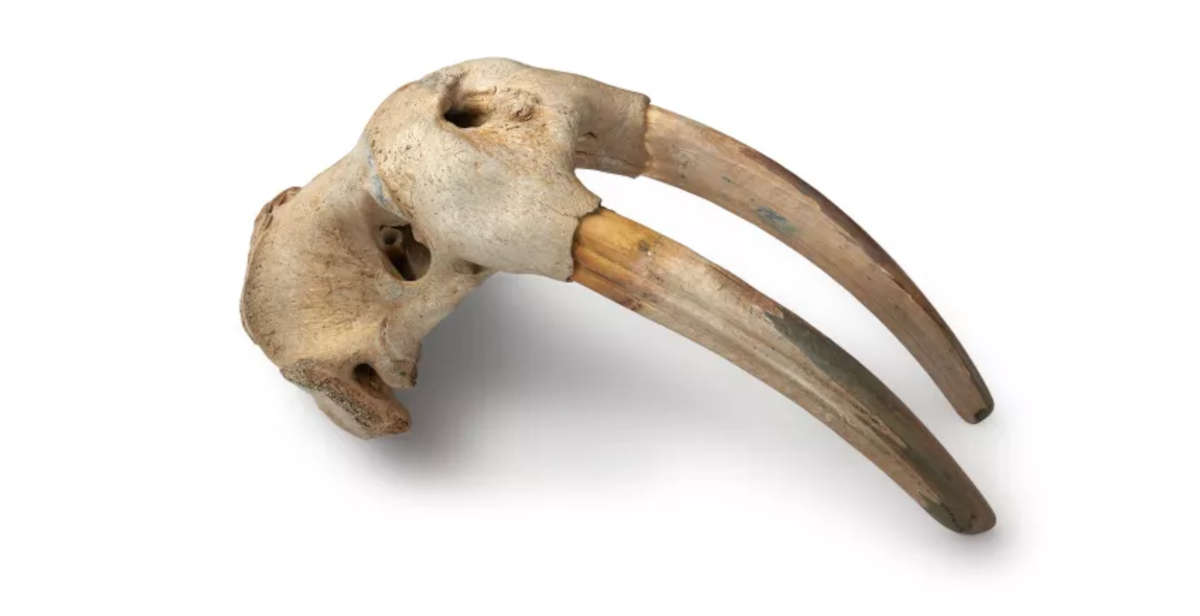Vikings traded ivory with Arctic inhabitants several centuries before Columbus
Vikings traded with the Arctic natives of Greenland several centuries before Christopher Columbus arrived in America. The discovery was made byLund University in Sweden, which examined the ancient DNA of a walrus to arrive at these conclusions.An international research team led by the Swedish university traced the trade routes of Viking-era walrus ivory, finding that Vikings and indigenous Arctic peoples probably met and traded ivory in remote areas of the High Arctic. The study is now published in Science Advances.
In medieval Europe, there was a huge demand for high-level products, includingwalrus ivory. The Vikings played a key role in the ivory trade, and this pushed the Norse expansion into the North Atlantic as far as Iceland and then Greenland, just to look for new sources of ivory.
“What really surprised us,” said Peter Jordan, professor of archaeology at Lund University, “was that much of the walrus ivory exported to Europe came from very remote hunting grounds located deep in the High Arctic. Previously, it was always thought that the Norse simply hunted walruses near their main settlements in southwestern Greenland.”
The researchers used genetic “fingerprinting” to accurately reconstruct the provenance of commercialized walrus artifacts. “We extracted ancient DNA from walrus samples recovered from a wide range of locations in the North Atlantic Arctic,” explains Morten Tange Olsen, associate professor at the Globe Institute in Copenhagen. “With this information in hand, we were able to match the genetic profiles of traded walrus artifacts to specific Arctic hunting grounds.”
As the new findings emerged, another fundamental question arose: if ivory was mined from the High Arctic, did Greenlanders have the seafaring skills and technology to venture so deep into the icy waters of the Arctic? Greer Jarrett, a member of the research team, tried to answer this question by reconstructing likely shipping routes by making experimental voyages aboard traditional Norwegian boats.
“Walrus hunters probably departed from Norse settlements as soon as the sea ice receded. Those who aimed for the far north had a very narrow seasonal window within which to sail up the coast, hunt walrus, process and store skins and ivory aboard their boats, and return home before the seas froze again.”
It is important to note, however, that these remote High Arctic hunting grounds were not deserted polar moors; in fact, they were inhabited by Inuit Thule and possibly other indigenous Arctic peoples, who also hunted walruses and other marine mammals. The new research provides further independent evidence for the long-debated existence of very ancient encounters between European Norse and North American indigenous peoples. “This would have been the meeting of two completely different cultural worlds. The Greenlanders had European facial features, were probably bearded, wore woolen clothing and sailed in boats built of planks; they caught walruses at hauling sites with iron-tipped spears,” says Peter Jordan.
In contrast, the Inuit Thule were specialists adapted to the Arctic and used sophisticated toggle harpoons that enabled them to hunt walruses in open water. They would have worn warm, insulating fur clothing and had more Asian facial features; they paddled kayaks and used open umiak boats, all made from animal skins stretched on frames.
“Of course, we will never know exactly, but on a more human level,” Peter Jordan concludes, “these extraordinary encounters, framed in the vast and intimidating landscapes of the High Arctic, would likely have involved a degree of curiosity, fascination and excitement, encouraging social interaction, sharing and perhaps exchange. We need to work much harder to properly understand these interactions and motivations, especially from an indigenous perspective and also from a more ’Eurocentric’ Norse one.”
Image: walrus ivory. Photo: Mikkel Høegh-Post
 |
| Vikings traded ivory with Arctic inhabitants several centuries before Columbus |
Warning: the translation into English of the original Italian article was created using automatic tools. We undertake to review all articles, but we do not guarantee the total absence of inaccuracies in the translation due to the program. You can find the original by clicking on the ITA button. If you find any mistake,please contact us.





























